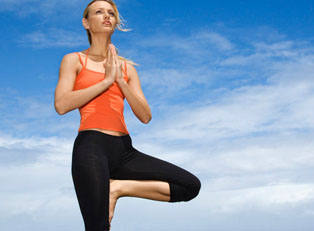History
Pilates was created by Joseph H. Pilates during World War I. As a child, Joseph Pilates was often sick and suffered from asthma. Eventually he participated in a number of athletic activities to help build his strength and stamina. During World War I, Pilates served as a nurse. It was during this time that he developed specific exercises and equipment to help rehabilitate immobilized soldiers.
After developing his exercises in World War I, Pilates created a series of mat exercises to help strengthen the core. Pilates was also interested in the mind-body connection, which he studied through through yoga and martial arts. He expanded methodology to include a focus on concentration, control, centering, breathing, precision and flowing movements.
After leaving Germany and moving to the United States in the 1920s, he began teaching his method to ballet dancers and boxers. Pilates published 2 books on his methodology before passing away in 1967.
Basics
The goal of Pilates is to strengthen muscles, increase flexibility and improve mental and physical well-being. To accomplish this, Pilates focuses on 6 principles. The first principle is concentration. In Pilates you must concentrate on every movement in your body. The second principle is control. This refers to muscle control, as each exercise must be performed with complete control of your muscles. The third principle is centering. Each exercise begins from the center of the body, or the Powerhouse. The Powerhouse of the body includes the abdomen, back, hips, buttocks and inner thighs. The fourth principle is flowing movements. This is achieved as one exercise transitions into the next. All movements should flow out from the Powerhouse area of the body. The fifth principle is precision. Through concentration and control, you will be able to perform precise movements. The philosophy of Pilates suggests that precision in Pilates will carry over to your everyday life. The final principle is the importance of breathing. Breathing helps to carry oxygenated blood to every part of the body. Learning to breathe correctly is an important part of Pilates.
The most commonly practiced form of Pilates is floor exercises. These are designed so that no weights are required with all resistance being provided through body weight. A Pilates class will follow a set sequence of exercises. Joseph Pilates originally designed these so that one position moved into the next in a natural way. Some of the typical mat exercises include The Hundred, The Roll Up and The Roll Over. All 3 exercises engage the abdominal muscles while building coordination, core strength and stamina. It is important to note, however, that a lawsuit in 2000 allowed the name "Pilates" to be used by anyone. So, it is important to consider the qualifications and training of any instructor. Instructors should tailor the class to meet the needs of both beginners and more advanced students.
The second type of Pilates class is based on the use of Pilates apparatuses. Some of the commonly used equipment includes the Reformer, the Cadillac and the Magic Circle. All of these pieces of equipment use resistance training through the use of pulleys and springs. Some people believe that exercise on the Pilates equipment provides faster and more visible results. Regardless of the results, the various apparatuses offer increased resistance, which create a challenging endurance and strength workout.
Considerations
Practicing Pilates offers a number of benefits. First, it improves your sense of body awareness. With such a strong focus on core strength and stability, it forces people to recognize weaknesses in other areas of their bodies. The second benefit of Pilates is a strong core. While Pilates might not guarantee flat abs, it does guarantee a stronger core, which includes the abdominal muscles and the back. The third benefit is better body control. Pilates teaches you how to move your body and achieve symmetry.
Pilates has become quite popular and can be found in most gyms and community centers. While beginners often choose mat exercises, physicians do caution anyone with back pain to first seek medical advice. Pilates could cause more harm if the spine is already damaged. Instructors agree that while exercise plans can be tailored for individuals, a proper medical diagnosis is needed first.



